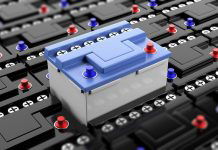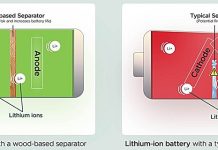
Have you ever wondered how small devices that interact with human cells get their power?
Researchers from the University of Oxford have made a big breakthrough that might change the world of medical gadgets.
Bio-devices, which are small tools that can work with our body’s cells, can be very helpful.
They could be used to deliver medicine directly to where it’s needed or help wounds heal faster.
But there’s a problem: these tiny tools need energy, and until now, we haven’t had a good way to give them the power they need.
Taking inspiration from electric eels, which produce electricity using internal chemical reactions, Oxford researchers have come up with a creative solution.
They’ve developed a teeny-tiny battery called a ‘droplet battery’. Unlike regular batteries, this one is soft and uses the movement of ions (tiny charged particles) to produce electricity.
To make this battery, they put five small drops of a gel-like substance (called conductive hydrogel) in a line.
Each drop has a different amount of salt, creating a ‘salt gradient’. This means there’s more salt at the ends and less in the middle. They then put barriers between these drops to keep them separate.
To activate this battery, they cool it down and change its surroundings, which turns these separate drops into one connected gel.
The ions move from the saltier ends towards the middle. By attaching wires to the ends, they can capture the energy this movement produces and use it to power other things.
The best part? This tiny battery can power something for over 30 minutes! And even if you store it for a day and a half, it still works almost as well as before.
To prove how it could work with cells, they connected the battery to some special human nerve cells.
These cells were marked with a glowy dye to show when they were active. When they turned on the battery, the cells started to communicate with each other, showing the battery’s potential to interact with living tissues.
Dr. Yujia Zhang, the leading scientist on this project, is excited about the possibilities. Thanks to modern tech like 3D printers for droplets, they’ve been able to create synthetic tissues with special abilities.
With this new battery, they can make even more advancements. They even showed that by connecting many of these batteries together, they could power a small light!
Thinking ahead, these batteries could be used in wearable devices, special medical implants, and even tiny robots that work inside our bodies. Imagine having a wearable gadget that is powered by this innovative battery, or a tiny robot that can repair tissues from the inside!
Professor Hagan Bayley, who led the research team, sees great potential in this discovery. “This battery could change how we think about combining technology with biology,” he says.
This study has laid the foundation for what might be the next big thing in medical technology.
In simpler terms, our body cells might soon have tiny, soft, and efficient batteries that can help them communicate better and maybe even heal us faster.
This cool invention just goes to show how nature (like electric eels) can inspire groundbreaking discoveries!
Note: For those curious about the science behind cell communication, it’s through a process called calcium signalling. It’s like the body’s version of Morse code for cells.
The study ‘A Microscale Soft Ionic Power Source Modulates Neuronal Network Activity’ has been published in Nature.
Follow us on Twitter for more articles about this topic.
Source: University of Oxford.



